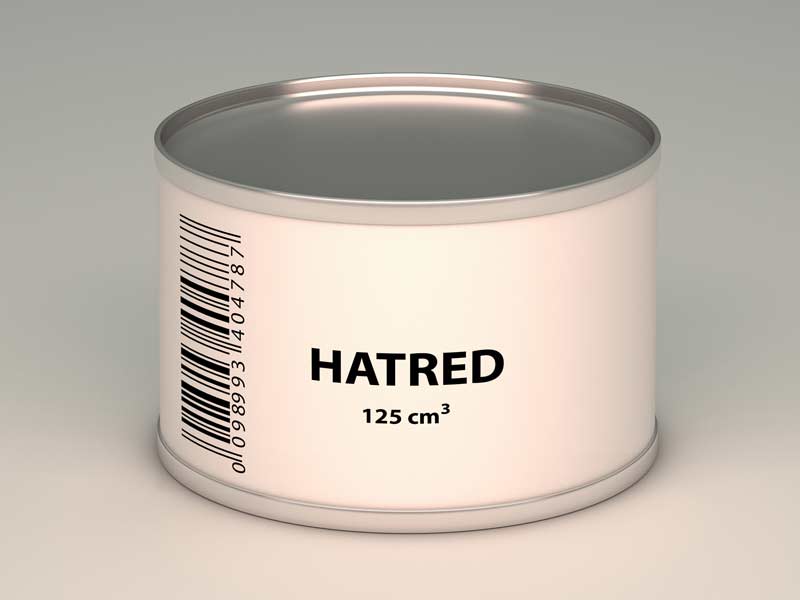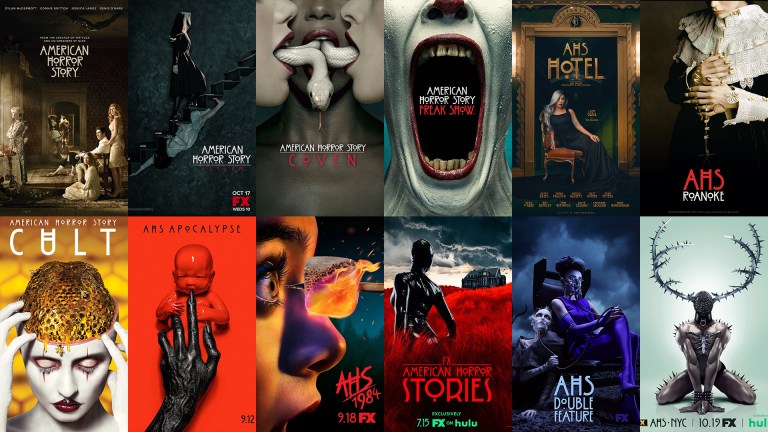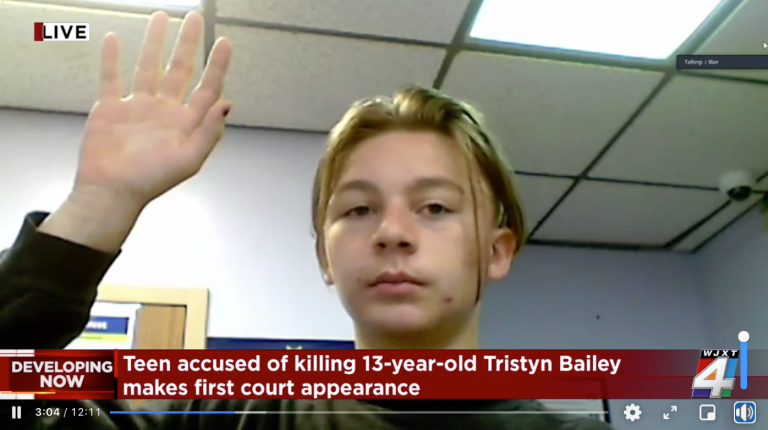‘Hate’ Doesn’t Explain Everything
In the wake of the Charleston tragedy, racial tension is heating up. However, can bigotry alone really be considered the root cause of American violence?
By James Swift

In the wake of the Charleston tragedy, racial tension is heating up. However, can bigotry alone really be considered the root cause of American violence?

On June 17, 21-year-old Dylann Roof walked into the Emanuel African Methodist Episcopal Church in Charleston, South Carolina. Although there are conflicting accounts of what happened inside the nearly 200-year-old church that evening, we all know the grisly outcome. At some point during a Bible study session, Roof produced a .45-caliber pistol and—for reasons that are still unclear—brutally murdered nine people.
Although President Obama declared it the worst place-of-worship massacre in US history, the most recent killing spree actually ties a record set 25 years ago, when two men murdered an equal number of people at a Buddhist temple in Waddle, Arizona. Whereas the incident—perpetrated by gunmen of Hispanic and Thai descent during an apparent robbery—has been all but forgotten, it doesn’t seem like the Charleston tragedy will be leaving the national consciousness anytime soon.
With the US public already on edge from a series of highly scrutinized police shootings, the South Carolina massacre has once again brought the dreadful augury of “racism” back to the national forefront. As soon as the attacker was identified as white—and especially after Facebook photos of Roof wearing clothing with the flags of defunct, pro-segregation regimes were leaked—the blowback was ferocious. Merely labeling the massacre as a hate crime, some high-ranking civil rights executives said, was not enough. Instead, folks like Anti-Defamation League director Abraham Foxman and UConn African Studies Institute director William Jelani Cobb told The New York Times they want the case prosecuted as an act of terrorism.
Although conclusive evidence tying Roof and any white nationalist organizations have yet to be uncovered, an online manifesto published by the Moe Howard-coiffed murderer clearly exposes him as a hate-filled bigot. In a 2,000 word essay (accompanied by dozens of photos of the gunman burning the American flag and showing off his ammo collection), he talks about the Travyon Martin incident waking him up to his “racial identity,” before trailing off into a spiel about white flight, how blacks are held to lower social standards and why Asians are pretty much the only non-Caucasian group white supremacists are allowed to like. Strangely enough, Roof appeared to be close acquaintances with a number of black people. One of Roof’s closest pals even hypothesized the church shooting was an improvisation, since the security at Roof’s initial target site—a local college—was too tight.
A known drug abuser who lived in self-imposed isolation for years, it is clear that there were a number of other factors beyond vitriolic ethnocentrism that probably played a role in Roof’s homicidal exploits. According to one of the church shooting survivors, Roof actually sought to kill himself in the building as well but had expended all his bullets. If that’s the case, it probably puts him more in league with glory-obsessed killers such as Adam Lanza and Elliot Rodger than true politically motivated mass murderers such as Anders Breivik and Dzhokhar Tsarnev. Calling Roof some sort of militant dissident trying to start up a holy war is likely giving him too much credit. Like the lengthy list of school shooters before him, he is probably nothing more than your garden variety, socially inept loser who thought he could triumph over insignificance by killing a ton of random people.
After the all-but-inevitable cries for more gun control legislation and mental health access welled up, however, a new scapegoat was pinpointed: the Confederate battle flag, which hung off a monument next to (but not really a part of) the South Carolina State House. Just three days after the massacre, approximately a thousand people gathered to protest it. One online petition to remove the emblem has gathered more than 300,000 virtual signatures, inspiring the social media rallying cry #TakeItDown.
While none of the protestors (I hope) think the emblem of the Old South alone was enough to provoke Roof’s dissent into madness and mayhem, many are arguing that the past it represents IS a catalyst for the rampage. The timing of this demand seems more than a little politically motivated, if not a tad exploitative, with the mass murder unmistakably being used as a on ramp to discuss a completely unrelated issue.
To begin, a flag is simply that—a flag. It’s a symbol, which by definition, is open to interpretation. Effectively, what some protestors are saying is that their collective interpretation of something utterly abstract HAS to be accepted as the only possible interpretation. In this case, the core concept is that the flag in question (which actually ISN’T the national flag of the CSA) stands for nothing more than the white man’s disdain for the blacks. It can ONLY mean racist rage, and as such should be removed from public sight.
Interestingly, no one seems to take offense to the United States flag that also flies near the State House. The CSA—the thing the object of scorn actually embodies—lasted barely half a decade, while slavery, as an institution, existed in America for nearly 250 years. A call to boycott the US flag because it represents genocide and longstanding class stratification would surely be a failure, although virtually EVERYTHING the detractors say the rebel flag stands for could also be said of Old Glory times 80.
There’s no denying some horrific things have happened in the deep South, but to say that one piece of cloth represents Jim Crow, slavery, lynch mobs and the good old boy network—as well as the spirit of intolerance today—is asinine. Furthermore, I fail to see the good that arises from turning a 160-year-old emblem into a blanket of guilt and shame. Will the stigma associated with the symbol somehow prevent others obsessed with ideological hatred from carrying out their lethal deeds? If anything, it seems like stomping on the flag and telling people to be embarrassed and outraged by their forefathers would actually incentivize those same people to embark upon more rampages, wouldn’t it?
I’ve lived in the southeastern United States my whole life. I’ve met scores and scores of people who wave the flag oh-so-erroneously referred to as the “Star and Bars.” Not one of them—not a single one—ever told me he or she flies it because they loathe blacks and it reminds them of historical wrongdoings. “Heritage, not hate” seems to be the most popular apologist remark. In their eyes, it’s a symbol of their own agrarian roots and lower-class beginnings (remember, my home state of Georgia was originally envisioned as a giant debtor’s prison.) For them, it’s also a reactionary statement against the influence of northern industrialism and expansion of federal powers. It’s a reminder that they have their own distinct cultural narrative, with its own norms and values, which run in opposition to the contemporary cultural zeitgeist. Could it be construed that history—and by proxy, the rebel flag itself—embodies a legacy of suffering and human exploitation? Sure, but you could say the very same thing about the state flag of California and the national flag of Israel, too. Why can’t that bruin represent the ethnic cleansing of Mexicans and why can’t that Star of David represent the unbridled hatred of Muslims?
The quest to stamp out racism in all its forms is the definition of a quixotic undertaking. No matter how much shaming and guilt-tripping and historical revisionism is promoted, some people are just going to hate the hell out of anybody different from them. This isn’t a white/black American thing, it’s a part of the human condition itself. The Japanese, Chinese, and Koreans have been at each other’s throats—militarily, economically and culturally—for eons. The ethnic tensions throughout American history could hardly be considered anything atypical, and unlike places such as India and Russia we can actually take pride in surmounting our legacies of subjugation. All one has to do is look at the staggering number of violent conflicts going on right now in Cameroon, Chad, the Democratic Republic of Congo, Kenya, Niger, Nigeria, Somalia, and Sudan and it becomes clear that horrific, in-group violence and marginalization can still take place, even in places where virtually everyone is the same color.
The Charleston shooting, as horrible as it was, is actually a fairly uncommon occurrence in today’s America. Not only is the national homicide rate at its lowest point since the late 1960s (complete with far fewer police-involved black homicides), the amount of interracial murders in the US has also declined dramatically.
In 1990, the FBI recorded 645 white-on-black homicides; by 2013, that number had dropped to 189. In fact, of the 2,491 black homicide victims that year, 2,245 of their murderers were the same color. Along those same lines, of the 3,000 Caucasian homicide victims in 2013, approximately 2,500 of the offenders were also white. And to make the whole brouhaha about racial violence in America all the more mystifying? Statistically speaking, a white person in the US is actually twice as likely to get killed by a black person than the other way around, despite African-Americans making up a much smaller portion of the national populace.
Are there people out there who want to cause havoc and mayhem and hurt others because of racist dispositions? That’s certainly true, but the numbers don’t lie; even if these people DO have horrible, bigoted perspectives, they are not going out into the streets in large numbers and killing people for what they believe in. Institutional racism may or may not be as big a problem as some are making it out to be, but actual white-on-black violence—particularly, in terms of homicide—simply isn’t an epidemic.
Taking away a piece of fabric isn’t going to change human instinct. It’s not going to alter longstanding worldviews, and it sure isn’t going to prevent homicidal idealists from killing people.
In a way, I think our culture WANTS racism to continue to exist, simply because it gives us a simple answer as to why things are they way they are. Like blaming the Devil for horrendous crimes, it give us a universal scapegoat, something we can pinpoint and chalk up as the root cause of all our difficulties. It’s a mentality that breaks down intricate, complex problems into easily digestible chunks we can swallow without hardly thinking about them. Perversely, we find that more reassuring than just accepting the fact that a confluence of factors may result in violence, or heaven help us, that people sometimes do terrible things simply because they consciously decide to do so. ![]()




